
How we manage feature flags at Basedash
December 16, 2021
here are a lot of ways to manage feature flags in products, but at Basedash, one of the easiest ways to manage them is to, well, just use Basedash.
Here's how we set that up:
We have a table in our database called Feature Flag which lists all the current features that are actively in development.

To add them to a user, we then have a separate table called User Feature Flag that allows us to associate any user with the feature we're testing. We typically add ourselves to these when they're in development and try to test any big feature out in this way, so we can come across bugs before it's shipped. We also add select users that we think might benefit from the feature before it's released widely. Here's what that table looks like:

I just go to the table, create a new record, choose which feature flag I want to enable, and then select the correct user (in this case myself). Couldn't be easier!
Using product feature flags like this has had a huge impact on how we roll out new features. We've used it to catch performance issues, UI bugs, app crashes, and just get a better feel for how things will work before customers see them. We also ask users if they want to opt-in or not, and if they run into issues, can easily remove them from the beta without affecting their workflow.
For now, the workflow is pretty basic. We don't have a great need for complex feature testing, roll outs, in-product A/B testing, but as Basedash (the company) grows and our needs change, Basedash (the product) will stay up-to-date. It removes the need for a separate tool to manage feature flags and helps us build a better product.
You could ship faster.
Imagine the time you'd save if you never had to build another internal tool, write a SQL report, or manage another admin panel again. Basedash is built by internal tool builders, for internal tool builders. Our mission is to change the way developers work, so you can focus on building your product.
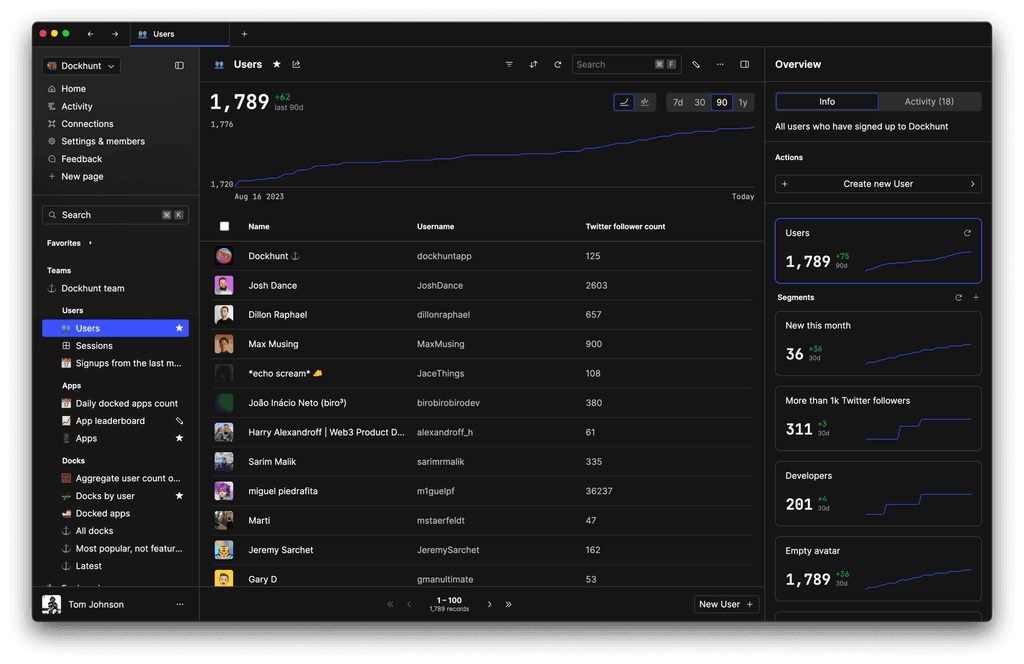
TOC
December 16, 2021
here are a lot of ways to manage feature flags in products, but at Basedash, one of the easiest ways to manage them is to, well, just use Basedash.
Here's how we set that up:
We have a table in our database called Feature Flag which lists all the current features that are actively in development.

To add them to a user, we then have a separate table called User Feature Flag that allows us to associate any user with the feature we're testing. We typically add ourselves to these when they're in development and try to test any big feature out in this way, so we can come across bugs before it's shipped. We also add select users that we think might benefit from the feature before it's released widely. Here's what that table looks like:

I just go to the table, create a new record, choose which feature flag I want to enable, and then select the correct user (in this case myself). Couldn't be easier!
Using product feature flags like this has had a huge impact on how we roll out new features. We've used it to catch performance issues, UI bugs, app crashes, and just get a better feel for how things will work before customers see them. We also ask users if they want to opt-in or not, and if they run into issues, can easily remove them from the beta without affecting their workflow.
For now, the workflow is pretty basic. We don't have a great need for complex feature testing, roll outs, in-product A/B testing, but as Basedash (the company) grows and our needs change, Basedash (the product) will stay up-to-date. It removes the need for a separate tool to manage feature flags and helps us build a better product.
You could ship faster.
Imagine the time you'd save if you never had to build another internal tool, write a SQL report, or manage another admin panel again. Basedash is built by internal tool builders, for internal tool builders. Our mission is to change the way developers work, so you can focus on building your product.

December 16, 2021
here are a lot of ways to manage feature flags in products, but at Basedash, one of the easiest ways to manage them is to, well, just use Basedash.
Here's how we set that up:
We have a table in our database called Feature Flag which lists all the current features that are actively in development.

To add them to a user, we then have a separate table called User Feature Flag that allows us to associate any user with the feature we're testing. We typically add ourselves to these when they're in development and try to test any big feature out in this way, so we can come across bugs before it's shipped. We also add select users that we think might benefit from the feature before it's released widely. Here's what that table looks like:

I just go to the table, create a new record, choose which feature flag I want to enable, and then select the correct user (in this case myself). Couldn't be easier!
Using product feature flags like this has had a huge impact on how we roll out new features. We've used it to catch performance issues, UI bugs, app crashes, and just get a better feel for how things will work before customers see them. We also ask users if they want to opt-in or not, and if they run into issues, can easily remove them from the beta without affecting their workflow.
For now, the workflow is pretty basic. We don't have a great need for complex feature testing, roll outs, in-product A/B testing, but as Basedash (the company) grows and our needs change, Basedash (the product) will stay up-to-date. It removes the need for a separate tool to manage feature flags and helps us build a better product.
You could ship faster.
Imagine the time you'd save if you never had to build another internal tool, write a SQL report, or manage another admin panel again. Basedash is built by internal tool builders, for internal tool builders. Our mission is to change the way developers work, so you can focus on building your product.

What is Basedash?
What is Basedash?
What is Basedash?
Ship faster, worry less with Basedash
Ship faster, worry less with Basedash
Ship faster, worry less with Basedash
You're busy enough with product work to be weighed down building, maintaining, scoping and developing internal apps and admin panels. Forget all of that, and give your team the admin panel that you don't have to build. Launch in less time than it takes to run a standup.
You're busy enough with product work to be weighed down building, maintaining, scoping and developing internal apps and admin panels. Forget all of that, and give your team the admin panel that you don't have to build. Launch in less time than it takes to run a standup.
You're busy enough with product work to be weighed down building, maintaining, scoping and developing internal apps and admin panels. Forget all of that, and give your team the admin panel that you don't have to build. Launch in less time than it takes to run a standup.
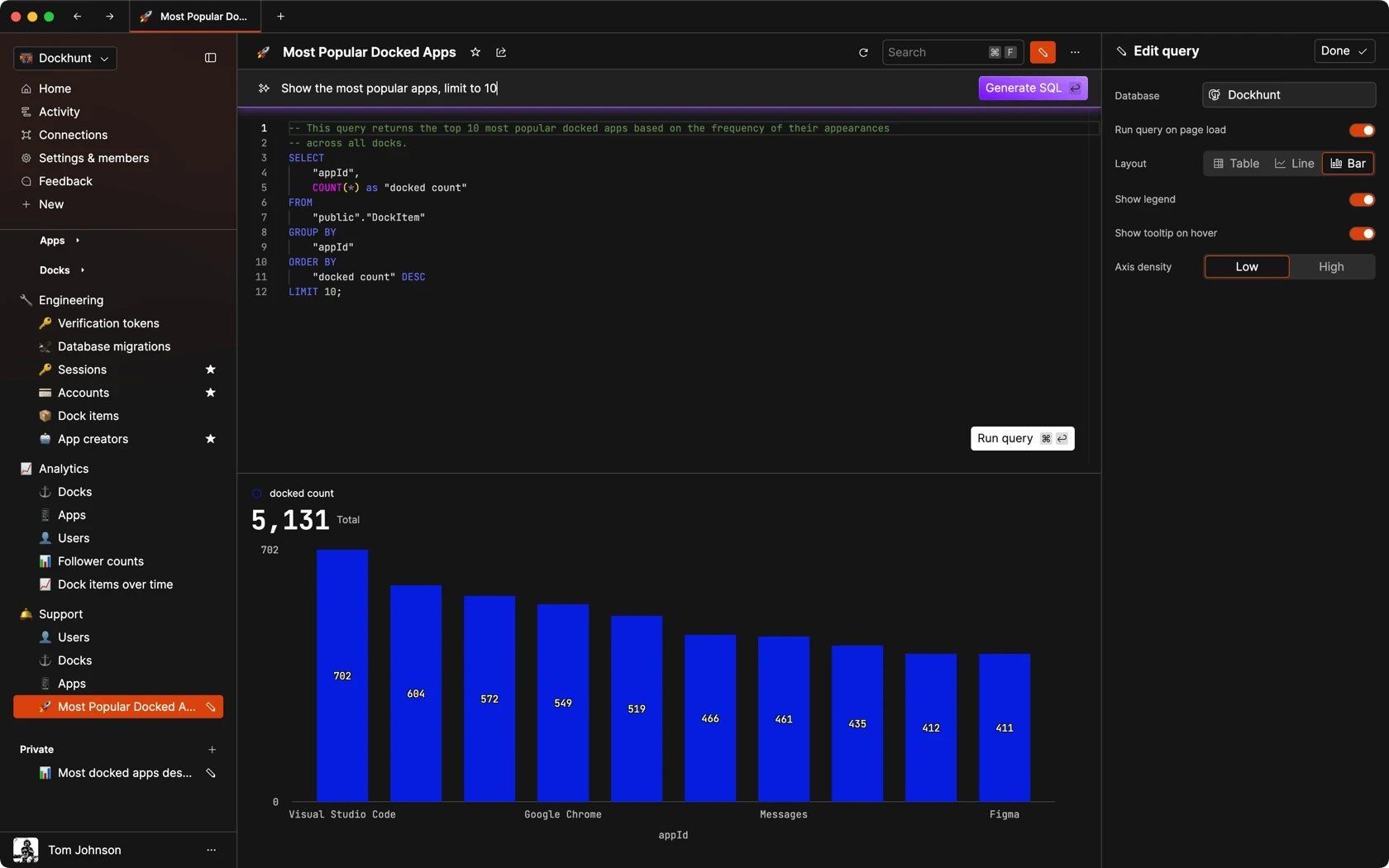
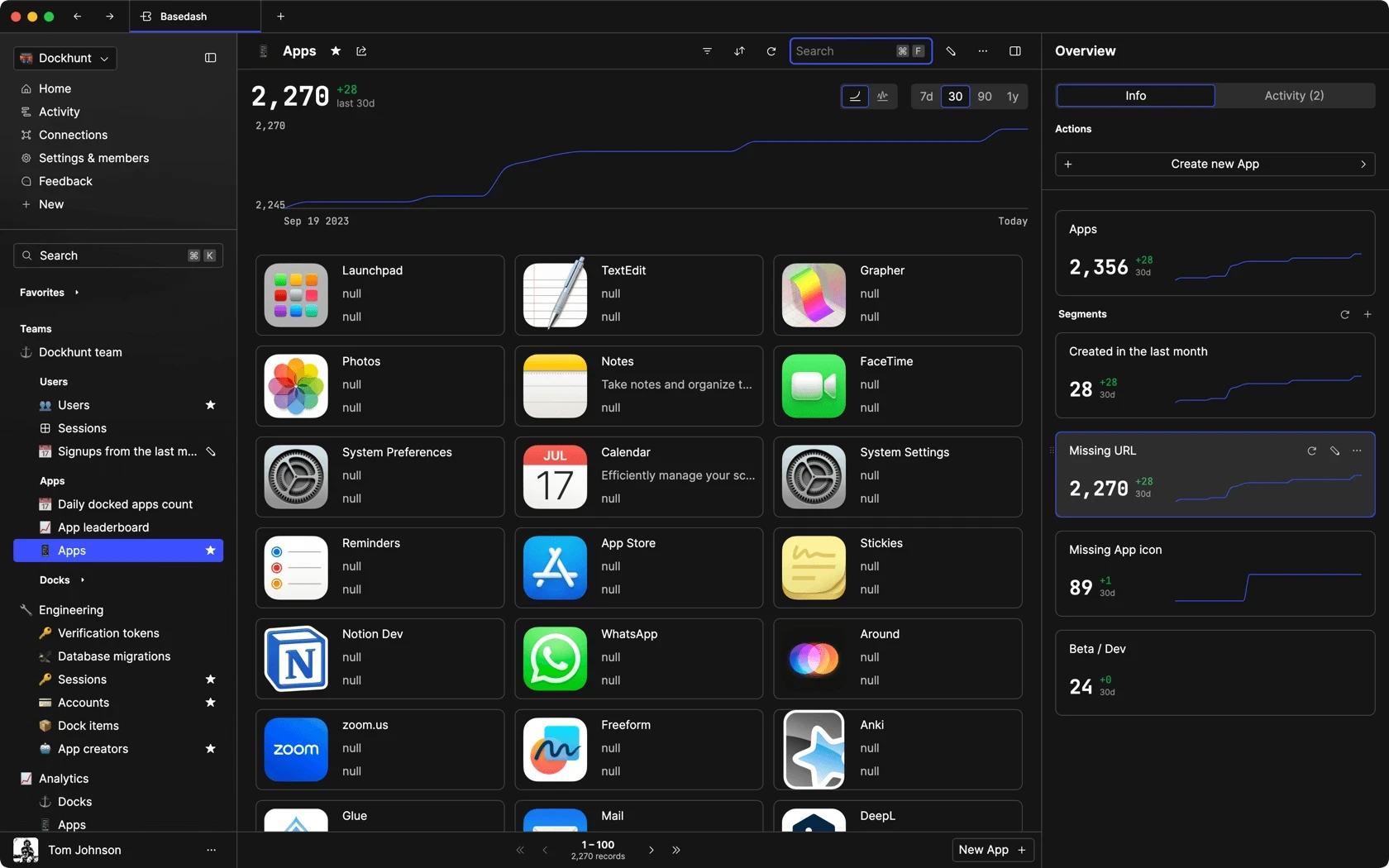
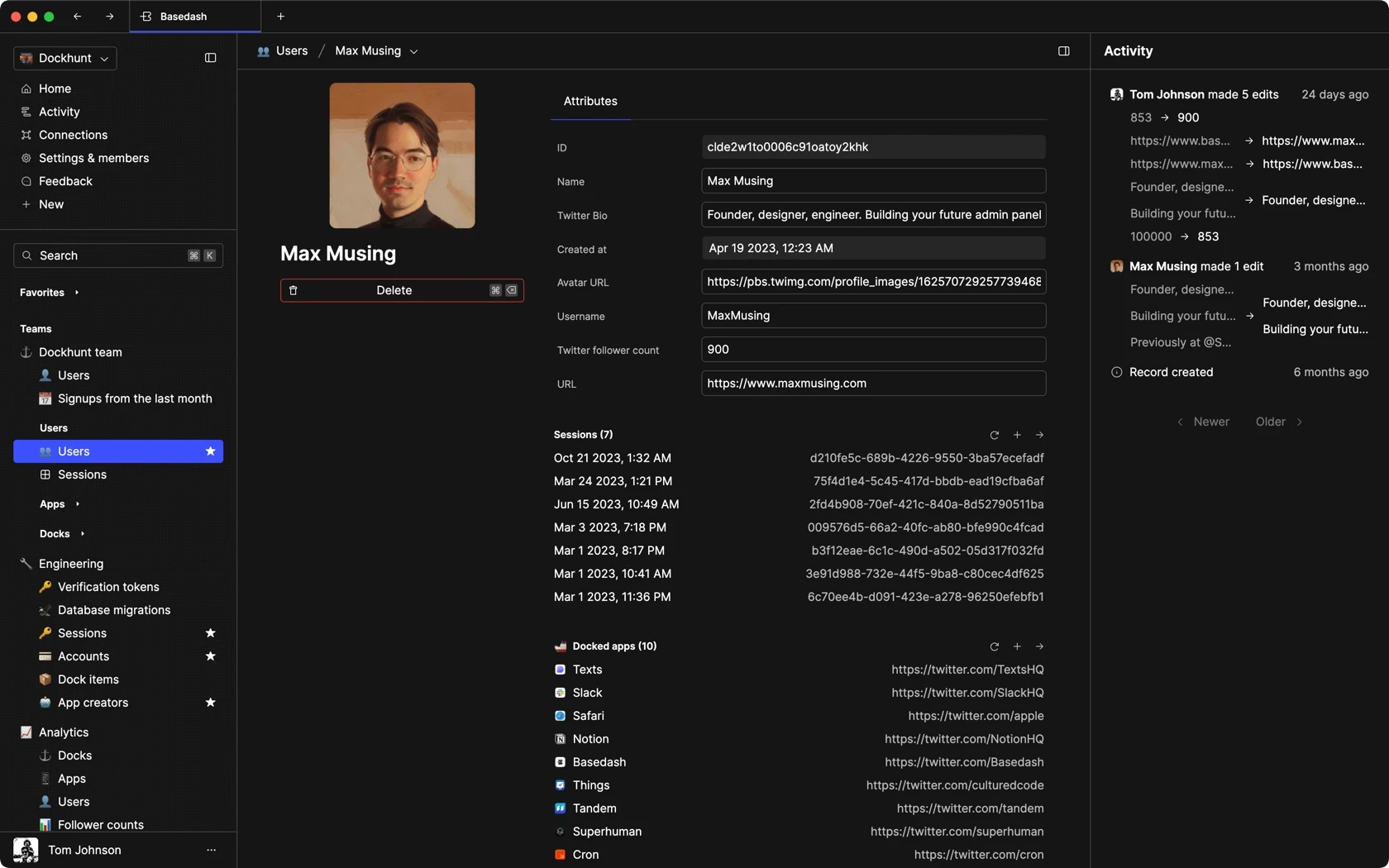
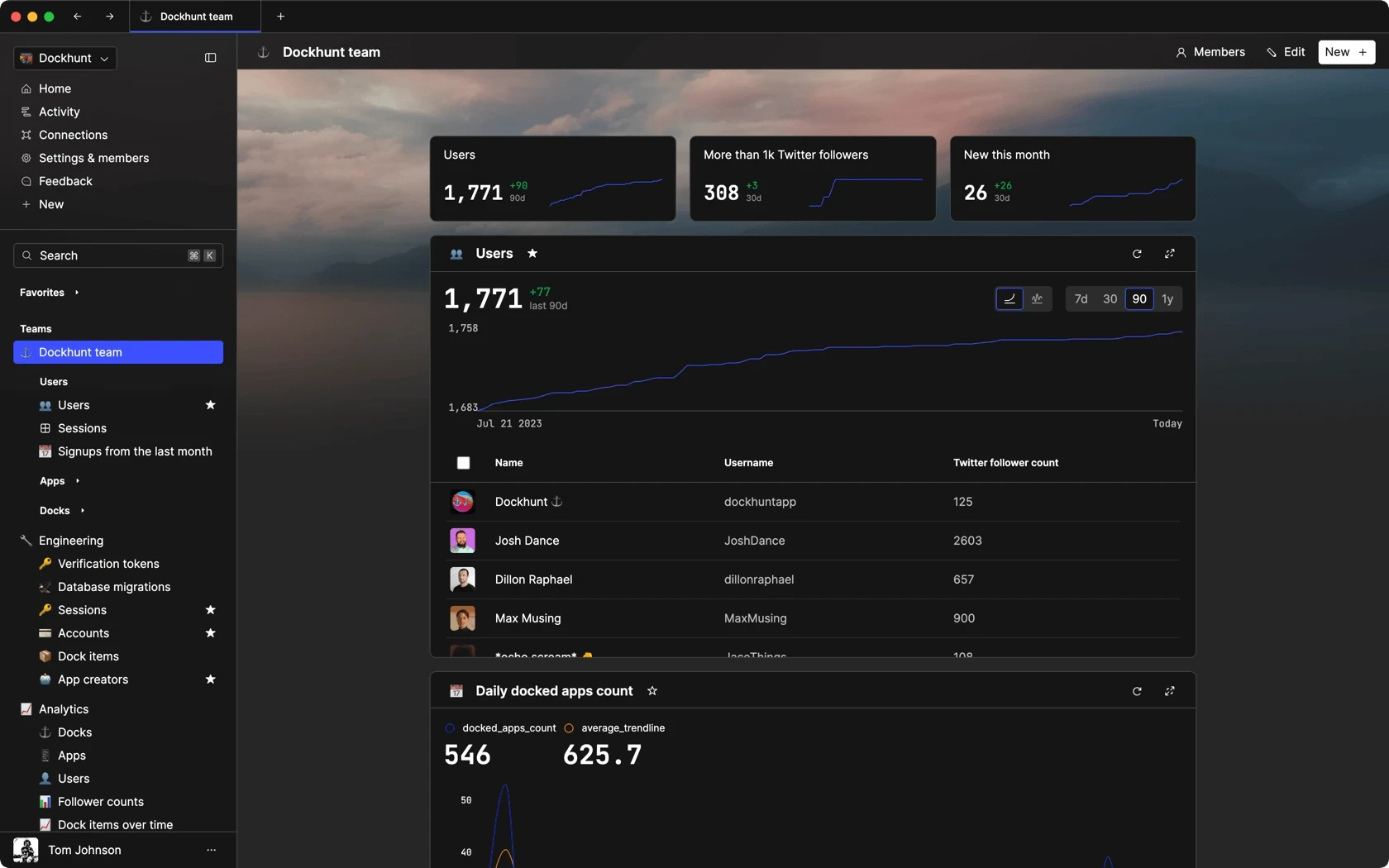
Dashboards and charts
Edit data, create records, oversee how your product is running without the need to build or manage custom software.
USER CRM
ADMIN PANEL
SQL COMPOSER WITH AI
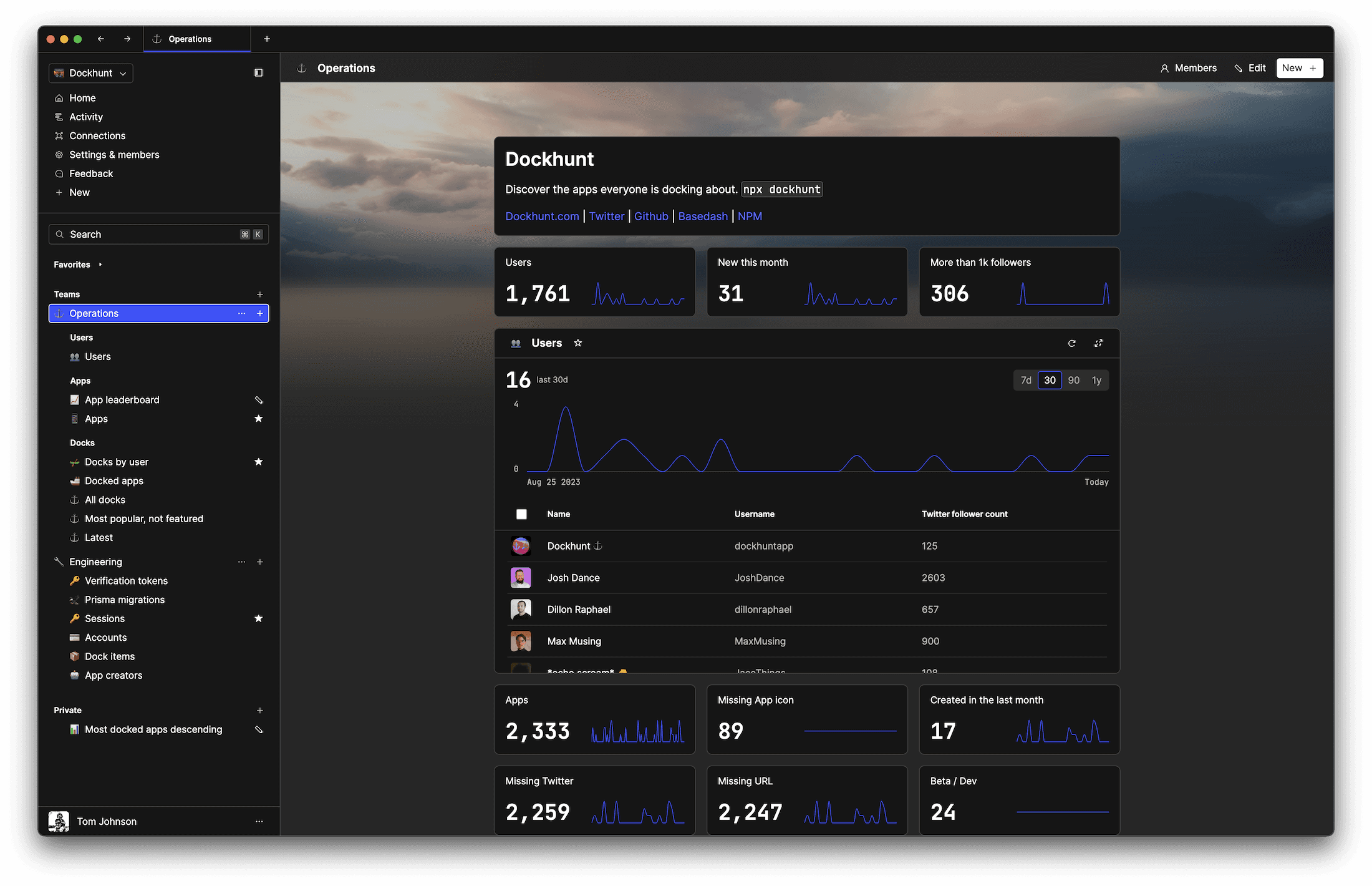
Related posts
Related posts
Related posts



How to Center a Table in HTML with CSS
Jeremy Sarchet



Adjusting HTML Table Column Width for Better Design
Robert Cooper



How to Link Multiple CSS Stylesheets in HTML
Robert Cooper



Mastering HTML Table Inline Styling: A Guide
Max Musing



HTML Multiple Style Attributes: A Quick Guide
Max Musing



How to Set HTML Table Width for Responsive Design
Max Musing
